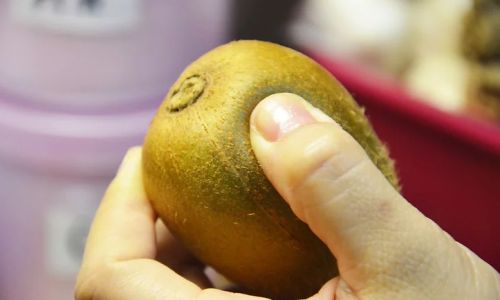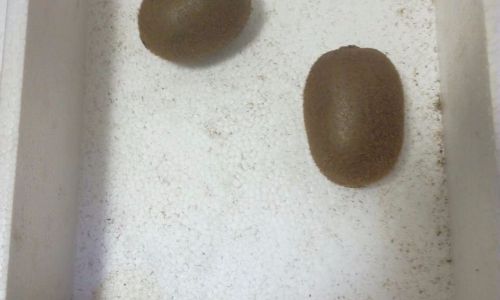Introduction
Ripening fruits and vegetables is a crucial process in agriculture and household food management, as it significantly impacts the taste, texture, and nutritional value of produce. Whether you’re a farmer, a home gardener, or simply someone who enjoys fresh produce, understanding how to ripen fruits and vegetables effectively can enhance your culinary experiences and ensure that you get the most out of your harvest. This article delves into various methods of ripening, focusing on natural, safe, and efficient techniques that cater to different types of produce.
Understanding the Ripening Process
Before diving into the specifics of how to ripen fruits and vegetables, it’s essential to grasp the fundamental biology behind the ripening process. Ripening is a complex series of biochemical changes that occur in the plant tissue after it has reached maturity. These changes are triggered by hormones, primarily ethylene, which acts as a signaling molecule to initiate the ripening cascade.
Fruits and vegetables vary greatly in their ripening requirements. Some, like bananas and tomatoes, undergo significant changes in color, aroma, and texture as they ripen. Others, such as carrots and cucumbers, may not show such dramatic transformations but still undergo internal biochemical shifts that improve their flavor and nutritional profile.

Natural Ripening Methods
- Time and Temperature Control
One of the simplest and most effective ways to ripen fruits and vegetables is to let nature take its course. By providing the optimal temperature and time, you can encourage the natural ripening process. For instance, bananas and avocados thrive in warm environments and will ripen faster at room temperature than in cooler conditions. Conversely, some fruits, like apples, can be stored in cooler temperatures to slow down ripening and extend their shelf life.
- Ethylene Exposure
Ethylene gas plays a pivotal role in the ripening of many fruits and vegetables. By exposing produce to ethylene, you can accelerate the ripening process. This can be done naturally by placing fruits that produce high levels of ethylene, such as bananas, apples, and tomatoes, in close proximity to those that respond well to it, like avocados and pears. This method is known as the “banana trick” among home cooks and is highly effective for speeding up ripening without the use of artificial chemicals.
- Paper Bags and Enclosures
To concentrate ethylene gas and enhance its effect, you can use paper bags or small enclosures. Place the fruits or vegetables you wish to ripen inside a paper bag, leaving a small opening for air circulation. The confined space will trap the ethylene gas, intensifying its impact and accelerating ripening. This technique is particularly useful for avocados, peaches, and nectarines.

- Layering and Storage
The way you store fruits and vegetables can also affect their ripening rate. For example, placing apples in a single layer on a tray rather than stacking them allows for better air circulation and exposure to ethylene, promoting even ripening. Similarly, tomatoes can be stored stem-side down to prevent moisture loss and encourage uniform ripening.
Artificial and Accelerated Ripening Methods
While natural methods are preferred for their simplicity and safety, there are situations where artificial or accelerated ripening methods may be necessary, especially in commercial settings. However, it’s crucial to use these methods cautiously to avoid compromising the quality and safety of the produce.
- Ethylene Gas Injection
In commercial agriculture, ethylene gas injection is a common practice to ripen fruits quickly and uniformly. This involves exposing the produce to controlled concentrations of ethylene gas in a closed environment. While effective, this method requires specialized equipment and precise control to avoid over-ripening or damaging the produce.

- Calcium Carbide
Calcium carbide is another chemical used to accelerate ripening, particularly in developing countries. When calcium carbide is mixed with water, it produces acetylene gas, which has a similar effect to ethylene in promoting ripening. However, the use of calcium carbide is controversial due to potential health risks associated with residues and improper handling. Therefore, it’s generally discouraged for home use and regulated in many countries.
- Modified Atmosphere Packaging (MAP)
Modified atmosphere packaging involves sealing produce in containers with controlled levels of oxygen, carbon dioxide, and other gases. This technique can extend the shelf life of some fruits and vegetables by slowing down respiration and ripening processes. While MAP is not directly used to ripen produce, it can be a valuable tool in managing the ripening process by providing a stable environment during transportation and storage.
- Heat Treatment
Heat treatment, such as hot water dips or warm air exposure, can also be used to accelerate ripening in certain fruits. This method works by stimulating the production of ethylene within the plant tissue. However, it requires precise temperature control to avoid cooking the produce or causing other quality defects.
Safety Considerations

When using any method to ripen fruits and vegetables, safety should be a top priority. Always follow best practices to minimize the risk of contamination, ensure proper handling, and maintain food quality. This includes washing produce thoroughly before consumption, using clean tools and containers, and storing ripe fruits and vegetables separately from raw ones to prevent cross-contamination.
Conclusion
Ripening fruits and vegetables is a delicate balance of science and art, requiring an understanding of plant biology and a willingness to experiment with different techniques. By leveraging natural methods like time, temperature control, and ethylene exposure, you can achieve beautiful, flavorful produce without resorting to potentially harmful chemicals. In commercial settings, where speed and uniformity are critical, artificial and accelerated ripening methods can be employed, but only with rigorous attention to safety and quality control.
Ultimately, the key to successful ripening lies in knowing your produce, understanding its specific needs, and being patient enough to let nature do its job while employing helpful techniques to enhance the process. With the right approach, you can enjoy the full bounty of your harvest, from the first blush of color to the final, perfectly ripe bite.







0 comments